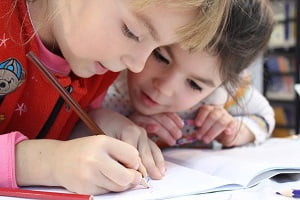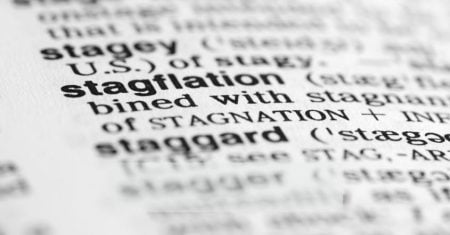Reading Instructions for a Dyslexic Child
- Updated on: Jul 6, 2024
- 8 min Read
- Published on Mar 4, 2020

What is Dyslexia?
Dyslexia is a learning disability that primarily affects the reading and writing skills in children. The reading and writing disabilities in dyslexics are due to difficulty in the processing of information by the brain.
Dyslexic people may be weak in reading and writing skills but at the same time, they are strong in some areas such as logical reasoning, and visually creative fields, etc.
Reading Instructions for a Dyslexic Children
Educating a child is very important for his overall development. Dyslexic children have difficulty in reading and writing which makes them different from other children in the classroom. Most people think that dyslexic children can never read or write which is wrong because several techniques can be applied by a teacher for aiding the growth and overall development of a dyslexic learner.
No doubt, improving the reading and writing skills of children with dyslexia is very challenging but at the same time it is also true that there isn’t any lack of intelligence in dyslexics. The sincere efforts by their teachers can help them in coping up with their disabilities so that they can also live a struggle-free life.
The reason why dyslexic children are poor in reading and writing is not that they lack in their intelligence but it is because their brain is unable to process the information correctly and is unable to hold the information as efficiently as do the brain of non-dyslexic children.
With the help of proper guidance and special techniques, the dyslexic children can be made not only capable of learning and reading efficiently but they can also be turned into high achievers. Dyslexia children find it difficult to learn the letter-sound system unless they are taught in an organized, systematic, efficient system. For this, they need a highly motivated, knowledgeable, and skillful teacher who will be well versed with the well-designed instructional approach designed according to the needs of dyslexic children.
Developing the reading skills in dyslexics require direct and explicit instruction by the teacher based on the knowledge and skills that support efficient and effective word reading. For example, understanding the principles of learning alphabets, and creating the phonological awareness.
Following are some of the reading instructions that can be given to dyslexics so that they can improve in their reading skills:
Multisensory Instruction Approach
These types of instructions can be really helpful for dyslexia children as it involves the participation of multiple sensory channels together. It is therefore called a multisensory approach.
The multisensory teaching approach is designed in such a way that it connects the reading, speaking, and writing through the simultaneous and alternative deployment of visual, auditory, kinaesthetic and tactile sensory modalities. While using this method of learning, teachers should make sure that the children are hearing, seeing, listening, and manipulating materials.
Multisensory instruction approaches can be used for mastering and assimilating letter-sound correspondences and sight words and therefore may help dyslexic children in learning more effectively.
Benefits of Multisensory Instruction in Dyslexics
Multisensory instructions can help in reinforcing learning by the following methods:
- It helps the learners in accessing the information
- Helps the learners in processing the information
- Helps the learners in retrieving the already learned information
- It allows the children to utilize their own approach during different tasks by utilizing their strong learning channels and at the same time improving their weaker learning channels
- Multisensory instruction approach is focused on principles of good instruction such as improving children’s attention and motivation, avoiding overloading the children with tasks requiring extra efforts, and ensuring sufficient practice and providing effective reinforcement.
There are different commercially produced multisensory teaching programs available for teachers who want to work with dyslexia children.
Also Read: Dyslexia in Adults
Also Read: Dyslexia and Attention-Deficit/Hyperactivity Disorder
Program Content
The program content for developing reading skills in dyslexics may involve the following:
- Creating phonological awareness
- Teaching recognition of letters
- Sound or letter correspondence
- Developing orthographic (patterns of spelling) awareness
- Developing reading fluency
- Developing reading comprehension
Creating Phonological Awareness
Lack of phonological awareness and problems in phonological processing are considered as the main causal factors of dyslexia. The reason is that the dyslexics show:
- a poor internal representation of sounds of languages
- a difficulty in storage and retrieval of words in the vocabulary
- a weak understanding of the grammatical structures of language
This hinders the dyslexic children in reaching the alphabetic stage of literacy and also in the development of word attack skills that are based on phonics.
The purpose of creating phonological awareness among dyslexics is that they should understand the function of alphabets in their representation of speech sounds and also understand the principles of alphabets.
The phonological awareness for dyslexics divides the words into their component sounds and then with the help of a multisensory activity, the teacher asks the children to repeat these sounds while looking at their mouth in a mirror and using their hands over their face so that they can feel the shape that the sound creates in their mouth.
Benefits of Phonological Awareness
Phonological awareness helps the children to progress slowly across the various levels of phonics. Besides, the children may require direct and explicit teaching to develop:
- ability to segment onsets
- ability to match words according to their rhymes and alliterations
- an ear for rhymes
- ability to manipulate the phonemes
Teaching Recognition of Letters
Dyslexics often find it difficult to recognize and name the letters. Besides, they have a major difficulty in associating, encoding, storing, and retrieving the linguistic material specifically in combination with symbols and letters.
Recognition and differentiation of reversal (b &d, p &q) and inversal (u &n, b & p) letters is also a difficult task for dyslexic children. These problems are mainly due to their issues in the coding of these letters rather than difficulties in the visual-perceptual system.
Children with dyslexia should be taught how to recognize different letters especially the ones which are reversal and inversals. All reversal and inversal letters should be taught separately to them so that they will not get confused. However, if some children have already developed this confusion (recognizing reversal and inversal letters) over a significant time period, then they will need extensive multisensory drills along with perceptual-motor reorganization. Besides, frequent and brief teaching sessions may also be required.
Sound or Letter Correspondence
When dyslexic children have attained enough phonological and letter recognition skills, sound-letter correspondence knowledge should also be developed by them. They should also understand and learn how the language phonemes map onto the letters that represent them.
Dyslexics often fail to master the skills of associating the spoken language with the written language. Teachers should therefore help them in acquiring the skills of identifying names, sounds, and shapes of phonograms and also develop an ability to put all of them in proper sequential order.
The main goal of teachers should be making the children capable of utilizing their visual, auditory, tactile-kinaesthetic and oral-kinaesthetic perceptual systems so that they should interact together to make learning so fixed that the children can produce any aspect of the phonogram reading or spelling.
Developing Orthographic Awareness
Orthographic (spelling patterns) awareness is essential for dyslexia children as it helps them in understanding the sensitivity of the structure of the writing system such as the patterns of spelling, orthographic rules, inflectional and derivational morphology, and the etymology.
Developing Reading Fluency
Fluency of reading should be developed in dyslexics so that they can also become avid readers. Different methods can be used by the teachers for improving the reading fluency in dyslexic children, one such method is repeated reading of prose text which is the most frequently used and researched method for developing fluency in dyslexics.
Repeated methods of fluency improving are based on the information processing models suggesting that fluent readers are those who are capable of decoding the text automatically and leaving attention free for comprehension. Fluency approach in dyslexic children involves the following:
- Oral reading (3 to 4 times) of materials for attaining the optimal benefits
- Measures of rate and accuracy both of which are essential for improving the reading fluency
- Using activities such as choral reading or aloud reading with an audiotape recording of the text which can be very useful
- Reading of single words and phrases multiple times for improving the fluency
Developing Reading Comprehension
Since dyslexics have continuing demands of orthographic decoding along with limited working memory capacity, they face lot of difficulties in developing comprehension. Therefore, for enhancing their comprehension, teachers model various cognitive processes involved.
Dyslexic children are also trained in a way that focuses on looking more carefully at the title of the reading and the picture clues, before they read. Besides, they are prompted to think about the things that they are already aware of.
The comprehension approach should be applied in a way that the children should be able to:
- Predict and hypothesize things that they think will happen
- Visualize and predict things in their mind
- Make analogies and connect the previously learned things with the new things that they are reading
- Pause reading at regular intervals to reflect on what they have read
The comprehension approach should also focus on developing various comprehension strategies among the dyslexics that are often used by good readers which include:
- Rereading silently or loudly
- Seeking help from others
- Reading on to look for and using context clues
- Verbalizing confusing points if there are any
Metacognition Instructions
Dyslexics are often very poor in understanding the metacognitive (assessing their understanding and performance) aspects of learning and therefore should be taught how to learn. This can be done by teaching them how to identify and analyze various connections and relationships that exist between multiple tasks of learning.
This typically means that the main focus should be on understanding the process of learning (how learning takes place) rather than only the content or product of learning.
Different strategies that can be used for developing metacognition in the reading of dyslexics include:
Teacher-Modeling
Here, the teachers demonstrate children about the application of various teaching strategies such as summarizing, self-questioning, etc.
Think-Alouds
Dyslexics are taught how to verbalize their processing while reading a text.
Reciprocal Teaching
Involves the participation of both children and teacher and both take turns for the following:
- Asking questions while reading
- Summarizing the text at appropriate points
- Noting problems
- Clarifying what has been previously read
- Predicting the remaining part of the text
Semantic Mapping
Here, children are taught about using the graphics made by a teacher and also the relation between different ideas present in the content. Also, children learn to mind map the content of the text while reading.
FAQs
How Does a Child With Dyslexia Learn to Read?
Dyslexic children can be taught reading skills in their schools so that they can improve their reading skills. Different reading instructions have been developed for dyslexic children so that they can become good readers. Some of these instructions include:
- Multisensory instructions
- Phonological instructions
- Comprehension instructions
- Fluency instructions
What Reading Program is Best for Dyslexia?
Different reading programs have been created for dyslexics so that they can improve their reading skills. These include:
- The Wilson Method
- The Orton-Gillingham Approach
- Preventing Academic Failure (PAF)
- The Lindamood-Bell Program
- RAVE-O
Among all these programs Orton-Gillingham Approach program for dyslexics is a widely used method.
What a Dyslexic Sees When They Read?
Dyslexics have difficulty in reading and writing because they are not able to see the words and letters properly. The reason is not that they have vision problems but it is because their mind is unable to process the information correctly. As a result, the dyslexic children see words reversed, mixed up, blur, jumbled, and messed up which makes them unable to read.
What is the Best Teaching Method for Dyslexia?
The most effective teaching method for dyslexics is the one that focuses on improving their reading and spelling-related issues by using the multisensory structured language education (MSLE) approach. Orton–Gillingham Program is one of the teaching methods for a dyslexia child that uses the MSLE approach.
How Can I Help my Dyslexic Child at Home?
There are different ways that you can use for helping and managing your dyslexic child at your home, such as:
- Communicate with your child as much as possible so that they will learn to communicate
- Try to improve his reading and learning skills by learning some tips from his teachers
- Support your child in all situations so that he can learn to be confident and bold
- Limit your child’s screen time, instead, involve him in different activities especially the ones that will develop his learning and motor skills
- Join some support groups so that you will stay updated about the information that is useful for your dyslexic child












